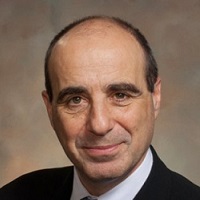
 By Patrick Conway, M.D., Principal Deputy Administrator and Chief Medical Officer, CMS
By Patrick Conway, M.D., Principal Deputy Administrator and Chief Medical Officer, CMS
and Andy B. Bindman, M.D., Director, Agency for Healthcare Research and Quality
Twitter: @CMSGov
Twitter: @AHRQNews
The Department of Health and Human Services (HHS) identifies the engagement of Medicare beneficiaries as a cornerstone to achieving better care, smarter spending, and healthier people. Our agencies – the Centers for Medicare & and Medicaid Services (CMS) and the Agency for Healthcare Research and Quality (AHRQ) – support the vision set forth in CMS’ Quality Strategy, of health and care that is person-centered, provides incentives for the right outcomes, is sustainable, emphasizes coordinated care and shared decision making, and relies on transparency of quality and cost information.
We know beneficiaries make health care decisions in a variety of ways. Often, these decisions involve multiple treatment options that can have different sets of advantages depending on the individual. As such, beneficiaries may not always understand the health information that may be available online, in print or from their clinician and the options available to them. They may not know what questions to ask clinicians, or feel that their values and preferences were considered and respected when a final decision for their treatment is reached. Engaging and empowering individuals to take ownership of their health involves giving people the tools they need to navigate the health care system – making health care information more accessible and helping to ensure that the patient’s voice is heard.
With this in mind, CMS is announcing two new models from the CMS Innovation Center that will increase patient engagement in care decisions by putting more information in the hands of Medicare beneficiaries. These two Beneficiary Engagement and Incentives (BEI) Models are the Shared Decision Making Model (SDM Model) and the Direct Decision Support Model (DDS Model). Beneficiary engagement broadly refers to the actions and choices of individuals with regard to their health and health care, and these decisions impact cost, quality and patient satisfaction outcomes. The BEI models will test different approaches to shared decision making, acknowledging that beneficiaries make decisions regarding treatment options in a variety of ways, and that facilitating a better understanding of their health and health care decisions is key towards improved beneficiary engagement.
Shared Decision Making is a process of communication, deliberation, and decision making that includes sharing information with the beneficiary that outlines treatment options, including harms, benefits, and alternatives; eliciting and supporting the beneficiary’s values and preferences maintaining an interactive and meaningful dialogue based on the best medical evidence tailored to the beneficiary’s condition; and making an optimal decision that takes into account the evidence on options, practitioner/care team expertise, and the beneficiary’s values and preferences.
The SDM Model will test the integration of a specific, structured Four Step process to shared decision making into routine clinical practice workflows of practitioners participating in Accountable Care Organizations (ACOs), resulting in informed and engaged beneficiaries who collaborate with their practitioners to make medical decisions that align with their values and preferences. The Model seeks to determine if this design results in improved beneficiary outcomes and lower Medicare spending while maintaining or improving quality, and whether it results in increased beneficiary satisfaction with care decisions.
Beneficiaries who have one of the six preference-sensitive conditions will be offered an in-person collaborative process by their clinician that can help them understand and thoughtfully weigh their treatment options. These preference-sensitive conditions include: stable ischemic heart disease, hip or knee osteoarthritis, herniated disk or spinal stenosis, clinically localized prostate cancer (cancer that is confined to the prostate gland), and benign prostate hyperplasia. For example, information provided will help the beneficiary decide whether surgery or other medical treatments are the right choice for them.
The SDM Model stipulates the use of decision aids and a structured Four Step process to be applied at all participating ACO practices, and expects to engage over 150,000 Medicare beneficiaries annually.
The DDS Model will test an approach to shared decision making provided outside of the doctor’s office, by Decision Support Organizations that provide health management and decision support services. For example, beneficiaries will be contacted by these organizations and provided access to a website or electronic application that provides them with unbiased and evidence-based information on their condition and/or treatment options. The beneficiary can then bring this information to their doctor’s office to enable them to consider their options with their clinician. This Model is designed to determine whether engaging beneficiaries outside the clinical care setting will enable them to become more informed, empowered and engaged health care consumers, and have a positive impact on their health care decision making.
A major goal of the DDS Model is to encourage beneficiaries to have a greater role in their care by building and fostering the physician-patient relationship. It will use patient-friendly material to educate patients about their condition and encourage them to have a conversation with their practitioners about care options to determine what care is best for them. Providing information directly to patients about their health decisions acknowledges that patients make decisions about their medical conditions outside of, as well as inside, their doctor’s office. The model seeks to determine if this design results in reducing Medicare spending while maintaining or improving quality, and whether it results in increased beneficiary satisfaction with care decisions.
The DDS Model uses organizations that are responsible for engaging an assigned population of Medicare fee-for-service beneficiaries in ongoing communications and medical decision support on behalf of CMS. These organizations may be commercial firms that already provide similar health information and decision support services to insured populations. Decision Support Organizations will not be health care providers or suppliers, will not engage in the practice of medicine, and will not interfere with the practitioner-patient relationship. They provide beneficiaries with reliable information that they can incorporate into discussions with their practitioners regarding health care decisions. The Model expects to reach 700,000 Medicare fee-for-service beneficiaries annually.
An independent evaluation will be conducted separately for the SDM and DDS models. The goal of the evaluation is to determine whether the particular model improves the quality of care without increasing spending; reduces spending without reducing quality of care; or improves quality of care and reduces spending. The evaluation will explore what aspects of the particular model contribute most to success and how contextual factors influence this success.
These models will look to move beyond current practices and examine new ways to engage with patients with regard to their health and health care, and hopefully increase quality of care delivered, increase patient satisfaction, and provide value in the cost of care delivered. Both of these models incorporate lessons learned in previous CMS projects that included patient engagement and shared decision making components.
These innovations also build on ongoing activities at AHRQ, where creating evidence-based tools to support effective clinician-patient interaction is a priority. For instance, AHRQ’s SHARE Approach model is a five-step process for shared decision-making that includes exploring and comparing the benefits, harms, and risks of treatment options through meaningful dialogue about what matters most to the patient. The Effective Health Care Program, meanwhile, offers online decision aids and plain-language research summaries to help patients consider their treatment options for certain clinical conditions when meeting with clinicians. Looking ahead, AHRQ is working to advance the field with new grant funding for projects up to $1.5 million to develop, test and evaluate measures of shared decision-making for research conducted in clinical settings. AHRQ also developed the Guide to Patient and Family Engagement in Hospital Quality and Safety, which has been used as a model for a toolkit to ensure smooth ambulatory transitions in care.
Together, new approaches such as CMS’ SDM and DDS models, along with evidence-based innovations like AHRQ’s SHARE approach and Guide to Patient and Family Engagement, will make better care, smarter spending, and healthier people a reality not only for Medicare beneficiaries, but patients and consumers everywhere.
Decision Support Organizations that are interested in participating in the DDS Model, and ACOs that are currently in the Medicare Shared Savings Program or Next Generation ACO Model and are interested in participating in the SDM Model must submit an electronic, non-binding Letter of Intent (LOI) for consideration for participation in the DDS and SDM Models, the first step of the application process. The LOI submission period begins on December 8, 2016 and closes on March 5, 2017. More information is available on the BEI Models website.
For more information on the DDS model, go to the CMS website.
For more information on the SDM model, go to the CMS website.
